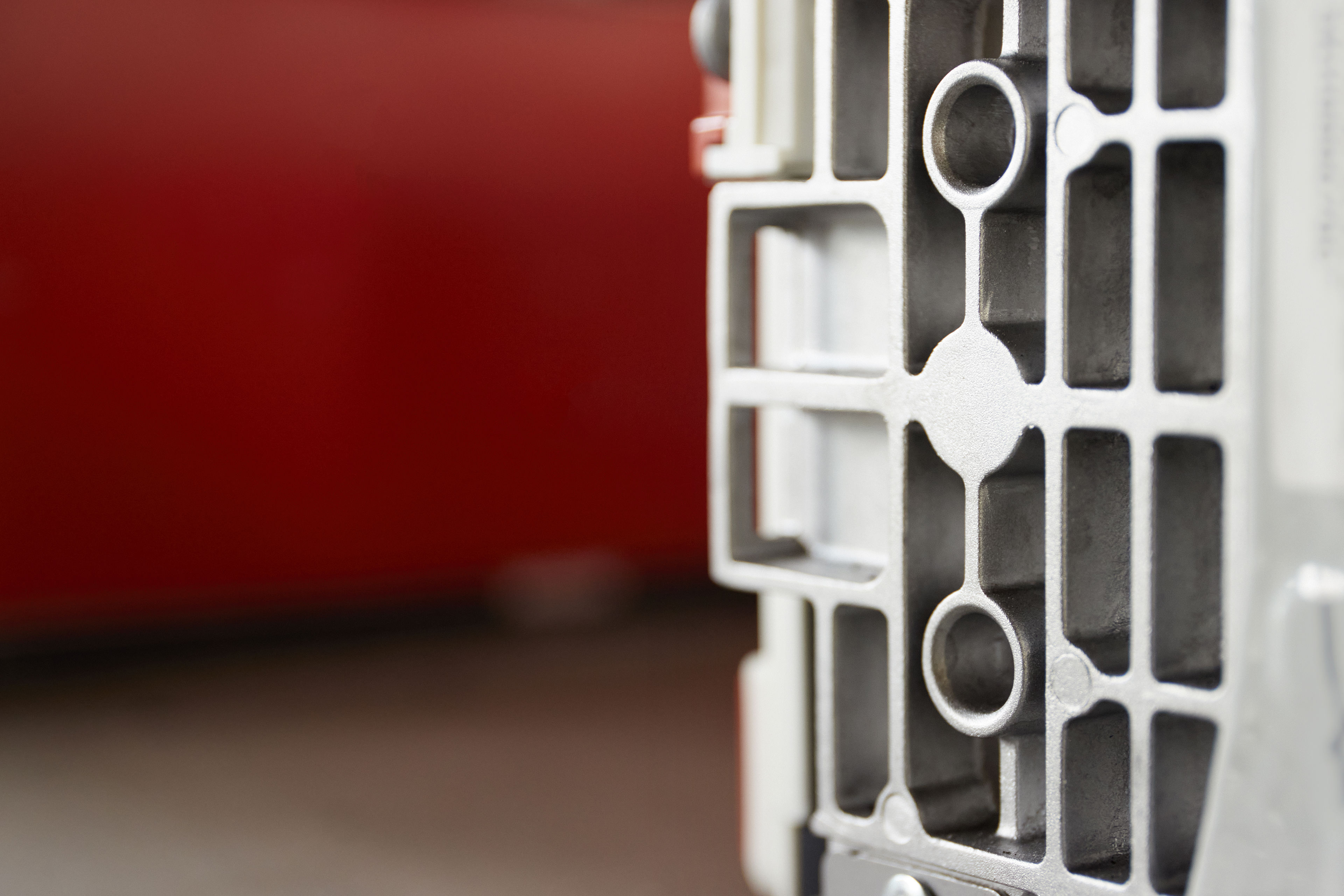- Material recycling
- Plastic
- Paper
- Electronics
- Metals
- Batteries
- Vehicle batteries
- Hazardous waste
- Alternative raw materials
- Industry solutions
- Manufacturing
- Public sector
- End-of-life vehicles
- Automotive
- Retail
- Process industry
- Infrastructure
- Recycling services
- Waste collection and recycling
- Total waste management
- Outsourcing
- Demolition
- Reuse
- Confidential services
- Insights & Inspiration
- Guides & Articles
- Videos
- Events

News & Insights
Designing batteries for circularity

“Batteries are found in thousands of different products, manufactured around the world. Many easily recyclable batteries arrive at our facilities on a daily basis but we also have to process end-of-life batteries that are designed in a way that makes recycling difficult.”
Pär Håkansson, Head of Stena Recycling's electronics recycling.
Insights into day-to-day recycling
But are batteries currently made to be recycled? Stena Recycling's facilities handle thousands of tonnes of batteries from electronic products every year. 10-11% of these are lithium-ion batteries and the volume is increasing all the time.
For example, it’s not uncommon for lithium-ion batteries to be unmarked. If the battery is not easy to remove, or if the material content and design information are not indicated, it’s often impossible to sort the battery correctly. In such cases, these batteries can’t be reused, recycled, refurbished or used for remanufacturing. They are often sent for incineration instead of recycling, which results in the loss of valuable and critical raw materials. This has a negative impact on both the competitiveness of the regional market and, of course, the environment. According to the European Commission, the critical raw materials cobalt, graphite and refined lithium have an import dependency rate of 86%, 98% and 100% respectively in the EU.
GOOD PROPERTIES ARE NOT THE SAME AS RECYCLABILITY
In one model of car battery examined at Stena Recycling, the manufacturer had screwed, welded and glued the materials together. The battery modules had also been covered with a large amount of super glue. In practice, it’s not viable to separate hard-fused materials, as this makes recycling the contents into circular raw materials for the manufacture of new products much more complicated.
“A battery like this takes too long to extract, increases the risk of fire and creates challenging working conditions, as it has to be processed manually. These types of design flaws can, therefore, hinder recycling efficiency. We are seeking to share this knowledge with more manufacturing companies in the future. In this way, they will get more support in developing new batteries that are resource-smart, both when the product is used and when it is recycled,” says Pär Håkansson.
DESIGNING FOR CIRCULARITY - GETTING IT RIGHT FROM THE START
This example illustrates the kind of obstacles we must overcome in order to circulate the materials we need for the sustainable production of new batteries. Ultimately, overcoming these obstacles is vital to continuing the electrification process. This starts by considering how a battery is designed and being prepared to challenge many of the conventions that exist around current design.

“We’re facing an event that doesn’t happen very often: building a new industrial ecosystem around a comprehensive product platform. It’s absolutely critical that we get it right from the start and avoid all the systemic problems associated with traditional, linear economics. We have a unique opportunity to design a circular value chain from the start, but we need to get the design right. We must also ask ourselves how these everyday components could be standardized, in a similar way to screws, containers and small batteries”
Mats Linder, Head of Circular Strategy Development at Stena Recycling Group
Circular battery design is supported by the EU's proposals for new battery legislation. These proposals set stricter requirements for the production of new batteries, including the amount of recycled material they must contain, labelling their contents and the ease with which they can be reused or recycled.
It is often said that about 80% of a product’s environmental impact is determined in the design phase. At this stage, the choice of materials, construction and appearance are all finalized. Batteries should be easy to remove from products and easily disassembled into smaller parts. However, designing for circularity doesn't stop with products - it also involves designing business models that maximize the value of the raw materials used. This is how we can create circular product flows and conserve as much high-quality material as possible.
TIPS FOR A CIRCULAR BUSINESS MODEL AND PRODUCT DESIGN
Recyclable
The battery in your product needs to be easily accessible and removable. This helps the product user to replace the battery and extend the product life. Finally, it simplifies the disassembly of the battery in the recycling process.
Competitive
Circular product design is interesting for you as a manufacturer from a purchasing perspective. For example, clear information on the carbon footprint can contribute to sustainable procurement that strengthens your competitiveness.
Ethical business and competition
Offering sustainably designed batteries attracts manufacturers that have ethical purchasing policies. For example, clearly labelling batteries with the source of their raw materials and climate impact can contribute to sustainable purchasing and improve competitiveness.
Goals
Designing batteries that can be used in different products, even between brands, improves their circularity. Standardizing battery design for portable products (such as power tools) can be achieved through sustainable entrepreneurship and collaboration between manufacturers. This also has benefits for consumers, as they do not need specific batteries for each type of product.
Leasing and take-back
Business models that employ product leasing and take-back enable responsible collection and recycling. These business models contribute to a reduced need for batteries overall, increase recycling rates and contribute to cleaner recycled materials. In this context, manufacturers should consider batteries to be products in their own right or parts of a product.
For further information

The battery product life: trends and initiatives in the value chain
Using lithium-ion batteries is a great resource for manufacturing new ones. But it's important to manage them properly throughout their product life. From designing them to recycling the materials. Are you in control of your batteries?

Answers from our experts - the future of battery recycling
We received many interesting questions from the audience attending The Future of Battery Recycling webinar. Here we have collected all the questions and answers. The answers are provided by the experts who participated in the event and Stena Recycling's R&D department.
Share article





